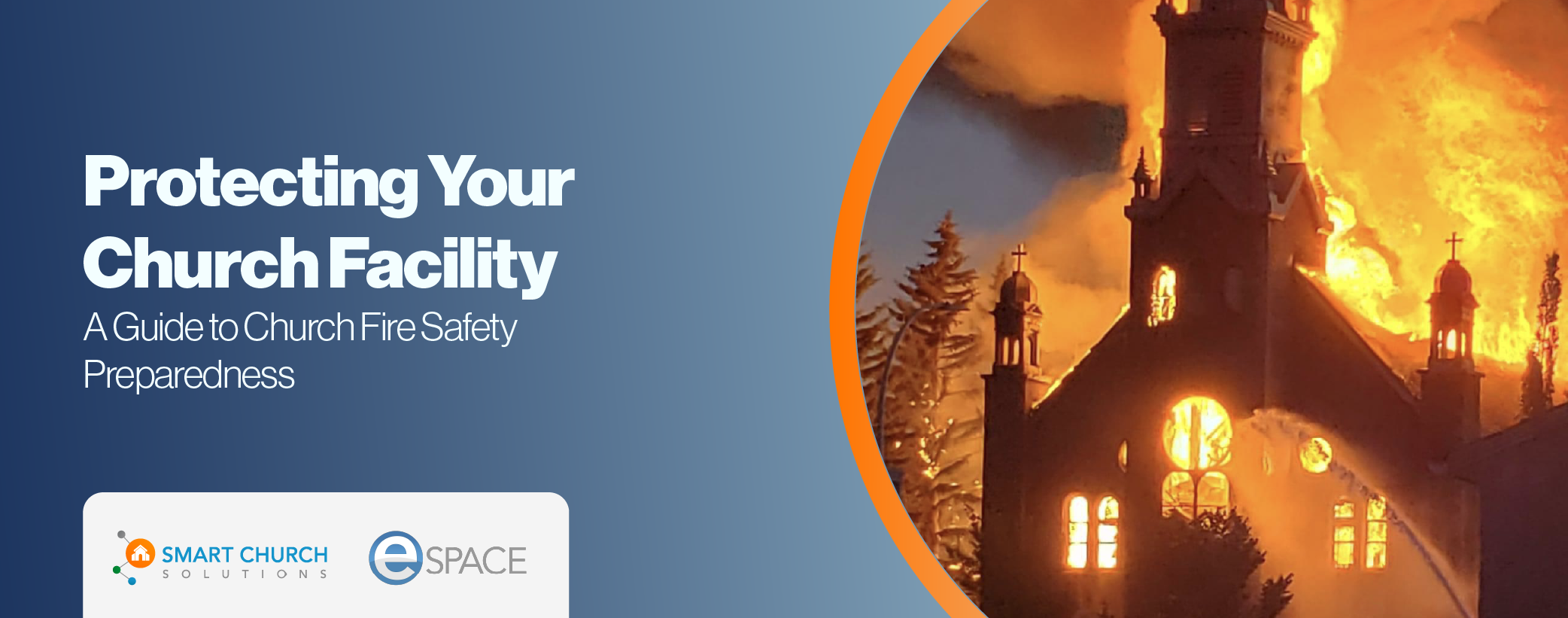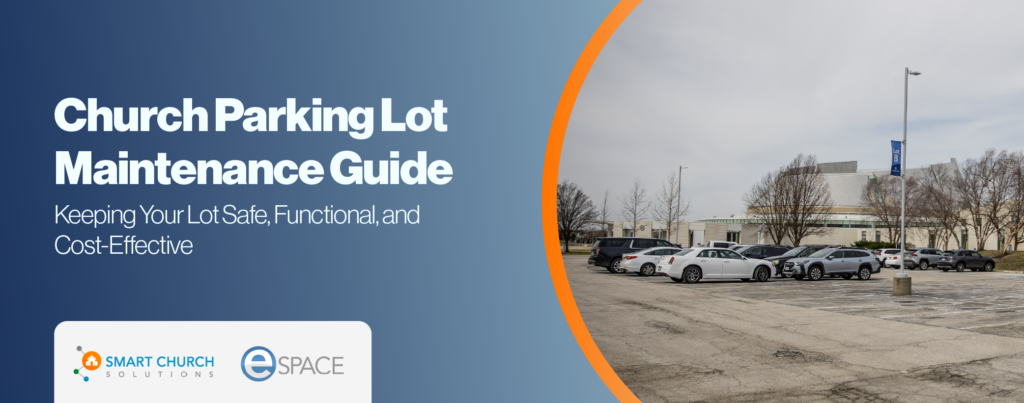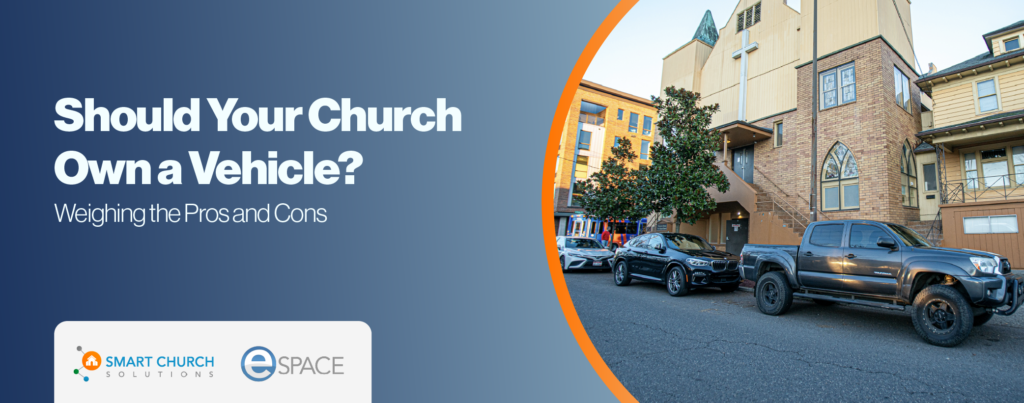Every year, church fires cause millions in damages, displacing congregations and disrupting ministries. Many of these fires could be prevented with simple, proactive measures. Whether your church is a historic sanctuary or a modern facility, fire preparedness is essential to protecting its mission and legacy.
Below, we dive deeper into each step, explaining why these actions are vital and how you can implement them efficiently and cost-effectively.
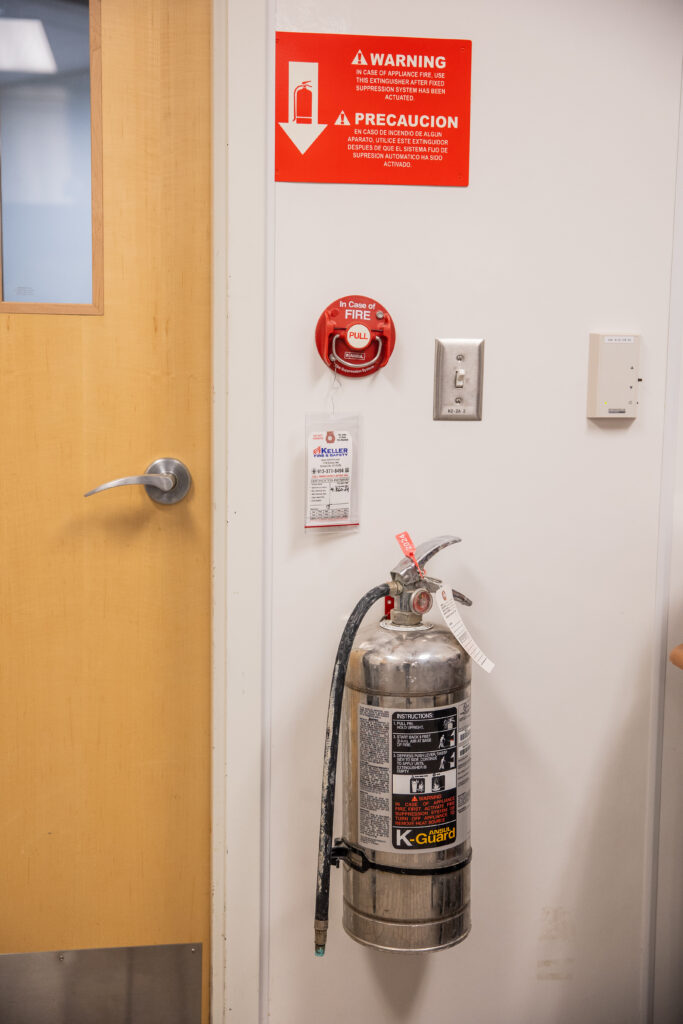
Step 1: Regular Maintenance – Your First Line of Defense
Fire safety doesn’t always require big budgets or extensive renovations. Often, it’s the regular, small actions that make a significant difference. Start with these low-cost or no-cost tasks to minimize fire hazards around your facility:
- Clear Out Combustibles: Dry leaves, pine needles, and debris can accumulate in gutters, on roofs, and around outdoor areas, creating a potential ignition source. Make a habit of clearing these areas, especially after storms or during high fire-risk seasons.
- Trim Vegetation and Trees: To limit fire spread, maintain a “defensible space” by trimming bushes and low-hanging tree branches within a safe distance from the building. This creates a buffer zone where flames can’t easily reach the structure.
- Remove Stored Combustibles: If your facility stores firewood, lumber, or any combustible materials, ensure they are kept at a safe distance from the main building. Even outdoor play areas or utility sheds need to be cleared of potential fuel sources.
Regular maintenance ensures that combustible materials don’t build up over time, significantly lowering the chance of fire spreading to your building.
Step 2: Simple Upgrades – Affordable Ways to Boost Fire Safety
With a modest budget, you can make impactful upgrades that strengthen your church’s defenses against fire. Consider the following steps to add extra layers of protection:
- Non-Combustible Barriers: Install non-combustible materials like gravel or rock mulch within a meter or two of the building’s foundation. This helps create a fire-resistant zone around the church, slowing down any fire approaching from the outside.
- Install Weather Stripping and Screens: Adding weather stripping to doors and non-combustible screens to windows prevents embers from entering the building, reducing the risk of internal ignition.
- Ground-to-Siding Clearance: Creating at least a 15 cm gap between the ground and exterior siding (using cement board or metal skirting) can further reduce fire vulnerability. This clearance helps prevent fire from climbing walls and igniting the building.
These upgrades are relatively easy to implement and provide substantial fire-resistance benefits, allowing your church facility to remain safe without breaking the bank.
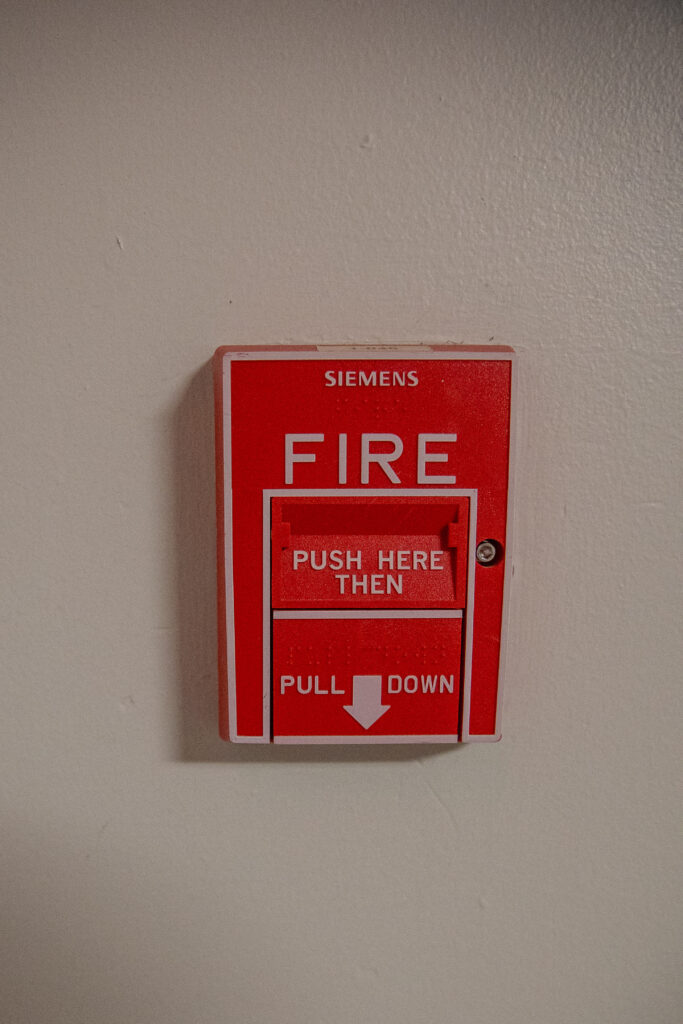
Step 3: Advanced Upgrades – Long-Term Protection
For churches able to invest in more substantial fire-prevention measures, working with a contractor to complete more complex upgrades can dramatically enhance safety. These changes are often suitable for facilities in high-risk areas or for churches that want the highest level of protection:
- Fire-Resistant Roofing: Replacing an existing roof with fire-resistant materials such as metal, tile, or fire-rated asphalt shingles can make your facility’s structure significantly more resilient to airborne embers.
- Multi-Pane Windows and Fire-Rated Doors: Installing tempered glass or multi-pane windows and fire-rated doors provides a barrier to heat and flames, protecting interior spaces.
- Deck Retrofitting: If your church has exterior decks or porches, consider retrofitting them with fire-rated materials and a continuous, non-combustible surface. This upgrade ensures that an outdoor fire won’t easily spread to the building itself.
- Tree and Vegetation Removal: In high-risk zones, removing trees within a 10-meter radius of the facility may be necessary to reduce the chances of direct flame contact.
These upgrades may involve a higher cost and more planning, but the investment pays off in the form of a fortified facility that can better withstand potential fire threats.
Your Role as a Steward of Safety
Creating a fire-safe church is about more than protecting a building—it’s about safeguarding the memories, ministries, and community bonds within its walls. By following these steps, you can actively reduce fire risks and preserve your church as a place of worship and support for years to come.
Want to make your church fire-safe today? Download our Emergency Preparedness Handbook for a reference guide, then share it with your team. Fire preparedness is a shared responsibility—let’s work together to keep our places of worship safe, welcoming, and resilient.


